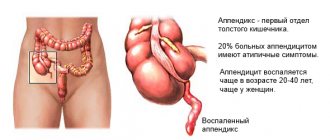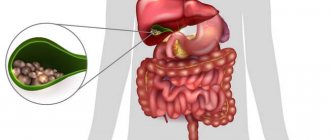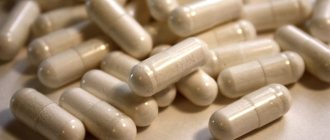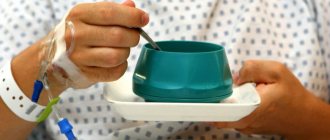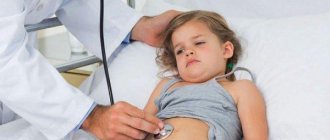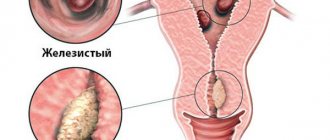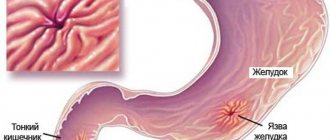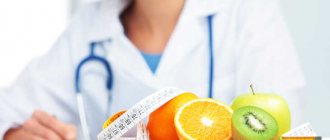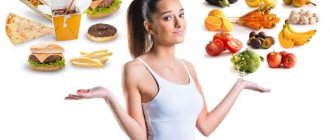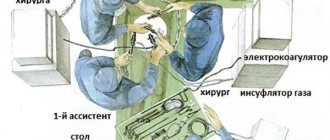Rehabilitation after surgery is a long process that depends not only on doctors, but also on the person himself. The diet after removal of appendicitis is indicated for maximum unloading of the digestive organs and the elimination of flatulence so that the abdominal wall can heal faster. To do this, a power supply system is created step by step.
Diet after surgery to remove appendicitis is one of the elements of rehabilitation
When assigned, table number
Diet is necessary not only after removal of appendicitis, but also in the presence of a chronic form.
In chronic form
If you have chronic appendicitis, you need to eat right. Patients are prescribed a diet that involves avoiding fried, salty and fatty foods. This diet has similar elements to table No. 1.
This diet helps reduce the burden on the digestive organs. Patients should not consume food additives or seasonings.
Food is crushed before consumption and supplemented with herbal teas and healing infusions. Coffee is prohibited. You can consume vegetables and fruits, low-fat meat broths.
If the patient is recovering, he is recommended diet No. 15 . This is a general strengthening table that saturates the body with vitamins and minerals.
Food does not require chopping, but smoked, salty and fatty foods are still prohibited. The doctor usually makes individual adjustments to the diet and carefully monitors the patient’s condition.
After surgery (laparoscopy, appendectomy), with purulent, phlegmonous
After removal of the appendix, the patient's nutrition and diet are especially strict. In the first few hours he drinks only water; food is prohibited. After 12-16 hours, give low-fat broth and jelly.
On the first day, the patient follows diet No. 0b. This is the minimum number of dishes, all of them pureed and liquid.
From the second to the fourth day the patient follows table No. 0b. It allows you to consume broths and purees, boiled rice, and medicinal teas. The patient can be given vegetables and boiled eggs.
Starting from day 5-6, the patient follows table No. 1. It involves consuming certain vegetables, fruits and meats.
Only those dishes that are easy to digest are allowed. Milk porridge and cottage cheese are allowed in limited quantities. The patient follows this diet for about a month.
If recovery proceeds well, the patient is transferred to restorative table No. 15 . It involves fewer prohibitions and allows you to eat solid food in small quantities.
The duration of such nutrition is determined individually and depends on the patient’s condition.
You will learn a few more recommendations on nutrition after surgery to remove appendicitis from a specialist in the following video:
Why do you need a diet?
Despite the fact that the appendix is not directly involved in the digestion process, if there are obvious signs of inflammation, any food and drinks are excluded. Food irritates the inflamed organ, so it is not advisable to eat before surgery to remove the appendix. Before the intervention, you can drink clean water in small sips, but it is better to limit yourself to wetting your lips. Liquids and food provoke vomiting and additional stress on the body.
Reasons why it is important to follow a diet before appendectomy surgery:
- Anesthesia. After the administration of anesthesia, the peristalsis of the digestive system is disrupted. Temporary paralysis of the intestines occurs. Food is not digested and cannot move through the sections, so the diet after surgery includes only liquids.
- Inflammation of the appendix begins at the base, which is pressed against the cecum. Over time, the pathological process covers the entire organ and can spread to nearby tissues. To restore the functioning of neighboring organs involved in inflammation, it is necessary to follow a therapeutic diet.
- Healing of internal sutures after removal of appendicitis. A sutured wound quickly heals in the absence of food that is difficult for the intestines.
The diet after appendicitis is aimed at restoring peristalsis, helping to avoid rupture of sutures, and promoting fusion of excised areas of the mucosa.
The duration of restrictions depends on the form of appendicitis, the presence of complications, and the type of intervention (laparoscopy or open method). Typically, the diet is followed after surgery for 3 weeks to 2 months.
Basic principles of nutrition
Basic principles:
- In the first 12 hours after surgery, the patient should not eat anything. They just moisten his lips with water and allow him to drink a little water.
- If the patient's condition is satisfactory, at the end of the first day after surgery it is allowed to eat a little chicken broth.
- On days 2-3, the patient needs to eat frequently, but in small portions. All food must be liquid. The dishes are pre-ground.
- After a few more days, the list of allowed foods increases, the patient is given more and more dishes, but they still must be lean. Any fatty food is prohibited.
Spicy, fatty, sour, and salty foods should be excluded from the diet. Smoked products, semi-finished products, food additives are prohibited. The patient is fed light, low-fat meals.
Prepare dishes by steaming, boiling or baking. Other types of heat treatment of products are prohibited.
Daily calorie content should not exceed 2000 kcal, weight - 2.3 kg. You need to eat every 2-3 hours. It turns out 5-6 doses per day.
The dishes are extremely light, the portions are small. Overeating is strictly prohibited.
Nutritional features if appendicitis was removed laparoscopically
The slightly traumatic operation nevertheless involves excision of intestinal tissue. Restrictions on the regimen and diet do not differ from the patient’s condition during a classic appendectomy, but the time for transition to a general diet is reduced as healing proceeds faster.
On the first day, you are allowed to drink mineral water with the gas released and eat some liquid mashed potatoes. From the second day, in the absence of drainage, it is recommended to walk. You can eat steamed cutlets with a side dish of semi-liquid porridge or mashed potatoes, or eat a grated apple.
Before grating, you need to peel the apple.
On the third day after surgery, non-acidic fresh juices, kefir, yogurt, and fruits are allowed in the diet. It is recommended to drink a lot: dried fruit compote, jelly, sweet tea, rosehip infusion, chamomile infusion. From the fourth day, greens, carrots, and zucchini are added to the soup. Persimmons, apples, figs, dates are allowed as dried fruits; baked apples and pears are useful.
There remain general requirements for frequent warm meals (at least 6 times a day) and abstinence from alcohol. Strict restrictions on spicy, fried and smoked foods are set for 2 weeks. In the future, doctors advise gradually expanding the diet.
Pros and cons, contraindications
It is not by chance that doctors prescribe this diet. It has the following advantages:
- Abdominal bloating is eliminated.
- The diet promotes tissue healing after surgery.
- The load on the organs of the gastrointestinal tract is reduced.
- Digestive function is restored.
- The body becomes stronger, weakness disappears.
This diet has only one drawback . This diet is not balanced. It cannot be followed for a long time; it is used only under the supervision of a doctor.
There are no contraindications to the diet. However, when prescribing a diet, the doctor studies the patient’s condition and adjusts the menu.
It is important to make it as beneficial as possible for the patient; this requires individual adjustments.
Basic nutrition after surgery
Appendectomy - involves following a diet for a speedy recovery of the patient. Since the operation was performed on the large intestine, it is important to spare and help the organ in order to quickly return to its previous lifestyle. Nutrition for appendicitis, regimen, foods that can be consumed are agreed upon with the attending physician.
Much depends on the type of operation. After laparoscopy, recovery occurs at a faster pace, and the diet expands faster. But even if the patient feels well, does not experience severe weakness or pain, and the temperature is elevated within normal limits, this is not a reason to independently create a diet for yourself. Diet after appendectomy is prescribed for children and adults with extremely important goals, compliance with which is the basis for the successful completion of the recovery period and return to their previous life.
The goals pursued by the diet:
- A gentle regime for the functioning of the large intestine and the entire gastrointestinal tract in general.
- Metabolism restoration.
- Supporting the patient with the necessary substances to restore strength.
- Increasing immunity and speedy healing of organs and tissues that have undergone surgery.
In the first days after appendicitis, food is prohibited altogether. The patient can only drink. A zero table is assigned. You should drink a lot, choosing high-quality clean water. It is advisable to drink at least 10 glasses a day. The presence of fluid will eliminate dehydration that could occur during a complicated attack, for example, after peritonitis. In addition, plenty of water will quickly restore tissue damaged during surgery. The drinking regime lasts for a day. Permitted liquids include:
- Water.
- Rosehip infusion.
- Fruit drinks without pulp.
- Herbal teas and decoctions.
Starting from the second day, during bowel function and to restore peristalsis, you can eat dietary foods. Its duration is prescribed depending on the patient’s condition. After finishing the therapeutic diet, they switch to the required standard option. The diet is calculated by day. After 1 day of drinking regimen, therapeutic nutrition is prescribed. Its duration is 1 week – 10 days. After a week, the period of expanding the diet begins.
Sample menu for 7 days
In the first week after surgery, the patient follows this menu:
| Day after surgery | First breakfast | Lunch | Dinner | Afternoon snack | Dinner |
| First | Water | Water | Water | Water | Water |
| Second | Weak herbal tea | Kissel | Congee | Rose hip decoction | Light chicken broth |
| Third | Boiled egg | Fruit jelly | Vegetable broth | Compote | Tea |
| Fourth | Kissel | Berry decoction | Puree from boiled chicken fillet | Herb tea | Liquid oatmeal on water |
| Fifth | Omelette | Compote | Boiled fish puree | Kissel | Vegetable soup |
| Sixth | Rice porrige | Tea | Chicken with vegetables | Cottage cheese | Beef meatballs with mashed potatoes |
| Seventh | Oatmeal | Ryazhenka | Pumpkin puree | Baked apples | Boiled egg |
In the first week after appendicitis removal, nutrition is especially strict . On the first day, the patient is given nothing but water. From the second day they will start giving broths, jelly and weak tea.
From the third day it is allowed to consume boiled eggs, vegetable broths, and fruit jellies. Patients are given meat and fish only from 4-5 days ; they are allowed to eat a little porridge for breakfast.
If recovery proceeds well, from 6-7 days you can eat low-fat dairy products.
In the second week of the diet after appendicitis surgery, the diet becomes more varied. For breakfast you can eat eggs, cereals, fruit purees.
For lunch they give vegetable soups or cooked with cereals. Mashed vegetables, lean meat or fish are allowed.
For dinner, patients are given cottage cheese and vegetable casseroles. You can snack on herbal infusions, berry fruit drinks, and compotes.
It looks like this:
| Day after surgery | First breakfast | Lunch | Dinner | Afternoon snack | Dinner |
| Monday | Rice porrige | Chamomile decoction | Boiled rice with chicken fillet | Kefir | Cottage cheese |
| Tuesday | Low-fat yogurt | Apple juice | Zucchini puree | Skim milk with cookies | Tea with marshmallows |
| Wednesday | Cottage cheese casserole | Galette cookies with tea | Chicken bouillon | Fruit jelly | Vegetable stew |
| Thursday | Oatmeal | Kissel | Mashed potatoes with boiled fish | Rose hip decoction | Barley porridge |
| Friday | Rice porrige | carrot juice | Vegetable stew with veal cutlets | Apple juice | Boiled zucchini with chicken |
| Saturday | Cheesecakes with fruit jam | Chamomile decoction | Buckwheat with chicken | Tea with honey | Kissel |
| Sunday | Cottage cheese | Berry juice | Potato casserole | Ryazhenka | Carrot puree |
It is recommended to create a menu based on vegetables, cereals, fruit juices, and meat. You should definitely include low-fat dairy products in your diet. They are suitable for breakfast, afternoon tea, dinner.
The menu in the second week is still strict, but it includes more dishes and products, which means the diet will be easier to tolerate.
Diet principles
In adults and children, eating habits after appendectomy do not differ. The diet is adjusted depending on individual characteristics and concomitant diseases.
After laparoscopy, the recovery process is quick, since the operation is less traumatic. Small punctures through which the appendix is removed heal in a short time.
The diet after surgical treatment of appendicitis complicated by peritonitis (inflammation of the peritoneum) is characterized by a smooth transition from one table option to another. As a rule, this is associated with extensive damage and prolonged recovery of the gastrointestinal tract after removal of the appendix.
To normalize intestinal function, follow the following diet rules:
- You need to eat small portions every 3 hours. Food is taken warm. Cold and hot foods irritate damaged mucous membranes.
- Sufficient fluid intake during the diet. You need to drink between meals. After surgery to remove the appendix, it is useful to consume berry jelly, rosehip decoction, and weak broths.
- Diet gradation. After removal of the appendix, you need to gradually expand your diet. They begin to eat with decoctions, broths, and drinks. Then pureed, pureed dishes are introduced.
- Exclusion from the diet of foods that cause bloating and flatulence. Excessive gas formation after removal of the appendix leads to increased intra-abdominal pressure.
- Limiting salt in the diet. It is best to avoid this supplement during the first week after surgery as it delays healing at the incision sites. Consuming more than 8 g of salt per day leads to impaired blood circulation in damaged tissues.
- In the first month of the fruit diet, you can only eat baked apples and pears. Fresh fruits contain a lot of fiber. This element is difficult for the gastrointestinal tract to digest after removal of the appendix.
- Heat treatment of dishes during the surgical diet. Food is cooked by steaming, in the oven or stewing in water without oil. After removing the appendix, the cereals are well boiled to a viscous consistency. Fried food causes belching and gas formation, so it is excluded during the diet.
- Mechanical restoration. Chew food thoroughly to ease bowel movements. In the first week of the diet, meat is eaten in the form of minced meat. The product, crushed in a meat grinder or blender, is added to porridges, soups, and vegetable side dishes. Then meatballs and cutlets are introduced into the diet.
- Dietary food for patients with appendicitis excludes additives that damage the mucous membrane. Dishes are prepared without spicy seasonings.
Nutrition plays an important role in every stage of recovery after appendectomy. In outpatient settings, patients continue to adhere to a therapeutic diet and limit physical activity. Such measures will help you recover quickly and avoid complications.
The diet for appendicitis involves 6 meals a day by the hour. The volume of clean water is 7-8 glasses per day.
In order not to injure the tissues at the sites of punctures/incisions during appendicitis, you need to avoid constipation and gas formation.
List of permitted and prohibited products
The diet should include:
- Cereals - buckwheat, oatmeal, rice.
- Vegetables - potatoes, zucchini, pumpkin, carrots.
- Dairy products - skim milk, kefir, cottage cheese, fermented baked milk.
- Meat - chicken, beef, veal.
- Eggs.
You can consume various herbal teas and berry fruit drinks . Fruit juices are acceptable. Apples can only be consumed baked. Other fruits are consumed only as recommended by a doctor.
It is allowed to consume fish in small quantities , but it should be of low-fat varieties, boiled or baked. Fish is included in the diet only from the end of the first week of the diet.
The patient is prohibited from consuming:
- Cereals - corn, pearl barley, barley, millet.
- Vegetables - cabbage, beets, tomatoes, cucumbers, horseradish, onions, garlic.
- Fruits - bananas, plums, pears, apricots, peaches.
- Spices, ketchup, mayonnaise, mustard.
- Sweets - chocolate, candies.
- Dairy products - cream, sour cream.
- Meat - pork, lamb, duck, goose.
The patient is prohibited from consuming spices and food additives. Food should be simple and lean. You cannot eat semi-finished products, smoked foods, or salty foods.
Animal fat, lard, bacon are prohibited - all this can harm digestion. It is recommended to eat only lean meat without seasoning.
Diet after appendectomy by day
It is necessary to return to your usual food correctly; you need to introduce foods one day at a time. It is best to take one or several per day, no more. Otherwise, the body may not cope and malfunction, which is characterized by increased gas formation, nausea and even vomiting.
Diet by day after appendectomy:
- Day No. 1 – the patient has no appetite on the first day, so it is recommended to drink only clean water. 12 hours after the appendectomy, you can drink a chamomile decoction.
- Day No. 2 – you can start eating minimal portions. All food should be natural, but at the same time healthy. You can indulge in pureed rice porridge in water, an omelet cooked in skim milk, a soft-boiled egg, chicken or fish soufflé, fruit or vegetable puree, beef pate, soup with vegetables (it is advisable to prepare puree soup). Baked apples and pumpkin. This diet should be followed until day 7. You can drink weak black and green tea, dried fruit compote, chamomile and rosehip infusions. It is unacceptable to drink carbonated water or coffee, drink strong tea or drinks containing alcohol.
- Day No. 8-No. 30 – during this period of time the menu expands. You don’t have to follow a diet day by day, the main thing is not to eat junk food. It is recommended to prepare fruit and vegetable purees, soup with vegetables and meatballs, chicken, and lean fish. Porridge can be cooked in water with the addition of milk, the proportions should be 1:1. You can eat cereals: buckwheat, rice and others, but after cooking you need to wipe them or puree them using a blender. The fish is steamed, choosing low-fat sea fish. Fermented milk products in the diet should be exclusively low-fat. Don’t forget about liquid, it helps metabolic processes in the body, so the amount of pure non-carbonated water you drink should exceed 2.5 liters.
Simple and tasteful
Diet recipes are quite simple. The prepared dishes are delicious, although this food is a little unusual for a healthy person.
Chicken bouillon
For this recipe you will need fillet, onions, carrots, and some greens. Place fillet, diced carrots and finely chopped onion into the water. After boiling, keep the broth over low heat for about an hour. Greens are added at the very end of cooking, 5 minutes before removing from heat. You can drink the liquid by straining and cooling it to 37-38 degrees.
Pumpkin puree
The peeled and chopped vegetables are brought to readiness in a slow cooker, after which, after cooling, they are blended.
Cottage cheese casserole
To prepare you need:
- 250 g cottage cheese.
- 1 egg.
- 3 tbsp. spoons of semolina.
- 1 tbsp. spoon of sugar.
All ingredients are mixed and placed in a greased form. You can bake in a slow cooker or oven at 200 degrees for about 25 minutes.
Following a diet after surgery is an integral part of therapy. When discharging a patient, the doctor usually informs him about what foods can be consumed and prescribes a special table.
If you make an error in nutrition, the stitches may come apart, bacterial infection or peritonitis may begin. It is necessary to adhere to the correct diet for a month or two, while introducing new dishes should be done gradually, observing how the body reacts.
What can you eat?
Nutrition after appendix surgery includes reviewing the foods you eat. Some foods must be excluded, others can be consumed constantly, and some foods must be limited in quantity and frequency of intake.
After the procedure, the patient can eat:
- Stale bread, it must be dried.
- Galette cookies.
- Meat and poultry fillets from low-fat varieties. You can make souffles and cutlets from them.
- Fish products from the river catch.
- Oatmeal, buckwheat and semolina porridge.
- Soups made from potatoes, zucchini, beets and carrots.
- Eggs, if they are presented as an omelet or soft-boiled.
- Low-fat fermented milk products.
- Kissels, jelly made from sweet ingredients.
- Vegetable oils.
It is better to drink a decoction of rose hips or herbal infusions, natural diluted juices, strained from the pulp. If you can’t give up tea, then it should be weak and diluted with milk.
Starting from 2-3 weeks, the diet is expanded by introducing a small amount of honey, jam, dried fruits, butter, marshmallows and pears.
Principles
Each day of the diet after appendicitis (peritonitis) is different from the previous one. But the principles of nutrition remain the same throughout the diet:
- The patient eats small meals 6–7 times a day.
- The dietary table is based on three dishes: broth, cream soup and liquid porridge.
- Dishes are steamed, stewed and boiled.
- The products are chopped and finely grated to a puree.
- Dishes are served warm, but not hot.
- The menu is updated every day. Fruits, vegetables and dairy products are added.
The purpose of the diet is to restore water balance in the body and prevent disruptions in the gastrointestinal tract. Diet dishes are easily digestible and do not burden the body with food processing. As you recover, caloric intake and energy intensity increase because the body returns to its previous metabolism.
Fruits and vegetables are a source of vitamins
It is recommended to drink plenty of fluids throughout the diet. Salt is consumed in moderation because it slows down tissue regeneration, just like alcohol. Spices are completely excluded from the diet.
What products to choose in the postoperative period
During the recovery period, it is necessary to exclude products that provoke gas formation and cause rotting processes. Dishes that increase gastric secretion or can have a negative effect on the mucous membranes of the organ are also contraindicated.
To speed up wound healing, products containing coarse fiber, which stimulates intestinal motility, are not recommended. Refractory fats, which are deposited in the gastrointestinal tract and require additional energy and strength from the weakened organ to be broken down, also have a negative effect.
Fast food turns out to be a difficult test for the intestines, and it contains a number of harmful compounds that can cause intoxication of the body and slow down recovery.
Diet samples for the second week
The diet after appendectomy looks something like this. The morning meal consists of semolina porridge and unsweetened tea. For lunch we offer cottage cheese casserole with dried fruits and berries, compote. For dinner you can eat 200 g of rice and 100 g of baked cod pulp.
The following is another example of a diet menu after appendicitis.
In the morning, a steamed omelet and weakly brewed tea are offered. The daily meal consists of buckwheat soup with lean meatballs. In the evening, you can eat a vegetable casserole with a small amount of low-fat sour cream.
Recipes for some dishes that you can eat after appendicitis
Chicken broth
For the broth you will need:
- chicken fillet or lean chicken pieces with bones,
- carrot,
- onion,
- salt,
- greenery.
Cut the carrots into large pieces; you can put them in whole and remove them when the broth is ready.
Add fillet, carrots, peeled onions, a little salt to the water
Bring to a boil and simmer over low heat for about 1 hour.
Strain the broth and add herbs, grind the fillet in a blender and serve like meat puree.
Boiled rice on water
- rice – 1 glass.
- water – 2 glasses.
Rinse the rice with water until transparent, pour boiling water over it and add salt to taste (for those patients who can already do so), cook for the first three minutes over the highest heat, reduce the heat and cook for 7 minutes under the lid, then reduce the heat to a minimum and cook some more. 2 minutes. Remove the pan from the heat, cover and wait 12 minutes.
Pumpkin puree
Steam the pumpkin pieces in a steamer until done
Grind pumpkin using a blender
Casserole with cottage cheese
- Cottage cheese – 250 g.
- 1 egg
- Semolina 3 tbsp. l.
- Sugar – 1 tbsp. l.
Mix cottage cheese, egg, sugar and semolina
Take a casserole dish and grease it with cold butter
Pour in the curd mass
Place fruit on top (if your doctor allows it)
Bake in the oven for 20 minutes. at a temperature of 200˚С
Zucchini puree soup
- Chicken wings
- 1 zucchini
- Potatoes 2 pcs.
- Carrot
- Onion
- Parsley or dill
First prepare the chicken broth
Cut all vegetables into cubes
Dip into broth and cook until done
Strain the prepared broth, place the vegetables in a separate bowl and grind with a blender (or grind through a sieve).
Mix the puree with the broth and add chopped herbs
Fruit jelly
To boil water. Peel and chop the apples, add them to water and cook like compote. Separately, dilute the starch in water and add to the prepared compote, grind the prepared fruits using a blender until mushy and mix everything.
A disease that absolutely everyone has been afraid of since childhood is inflammation of the appendix. After all, as you know, when the first symptoms appear, in the form of nausea and sharp pain in the right side, you should immediately seek qualified medical help, in the form of immediate surgical intervention. Otherwise, death is possible.
If circumstances have developed in such a way that excessive consumption of harmful foods has led to inflammation of the above-mentioned organ and it had to be removed, in the future you should adhere to exclusively healthy nutrition so as not to aggravate the situation. We will talk more about a special therapeutic diet after appendicitis removal in the following material.
Other recommendations
For patients who adhere to a diet after appendicitis surgery, experts advise drinking up to two liters of fluid per day. It not only removes harmful substances from the body's cells, but also restores the volume of blood lost during surgery. In the event of an inflammatory process, it is recommended to increase the volume of water to 3-3.5 liters per day. This will reduce the patient’s body temperature and replenish moisture lost due to increased sweating.
As for table salt, its amount is limited to 8 g per day. Excessive consumption of this product disrupts the process of blood microcirculation in the suture area and prevents rapid wound healing.
Alcohol-containing drinks are strictly prohibited during the rehabilitation period. Alcohol slows down tissue repair and reduces the effectiveness of antibiotics prescribed after removal of the appendix.
